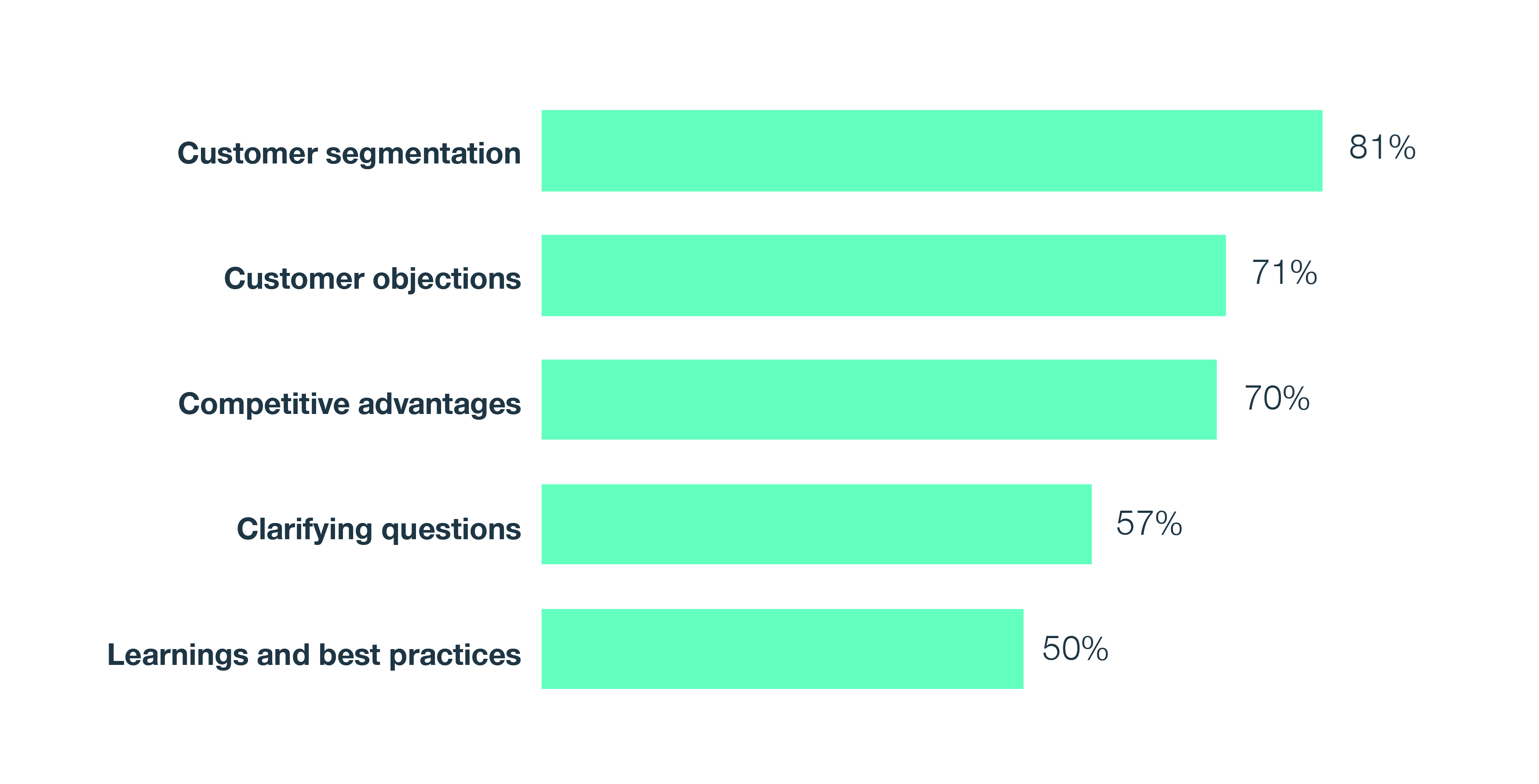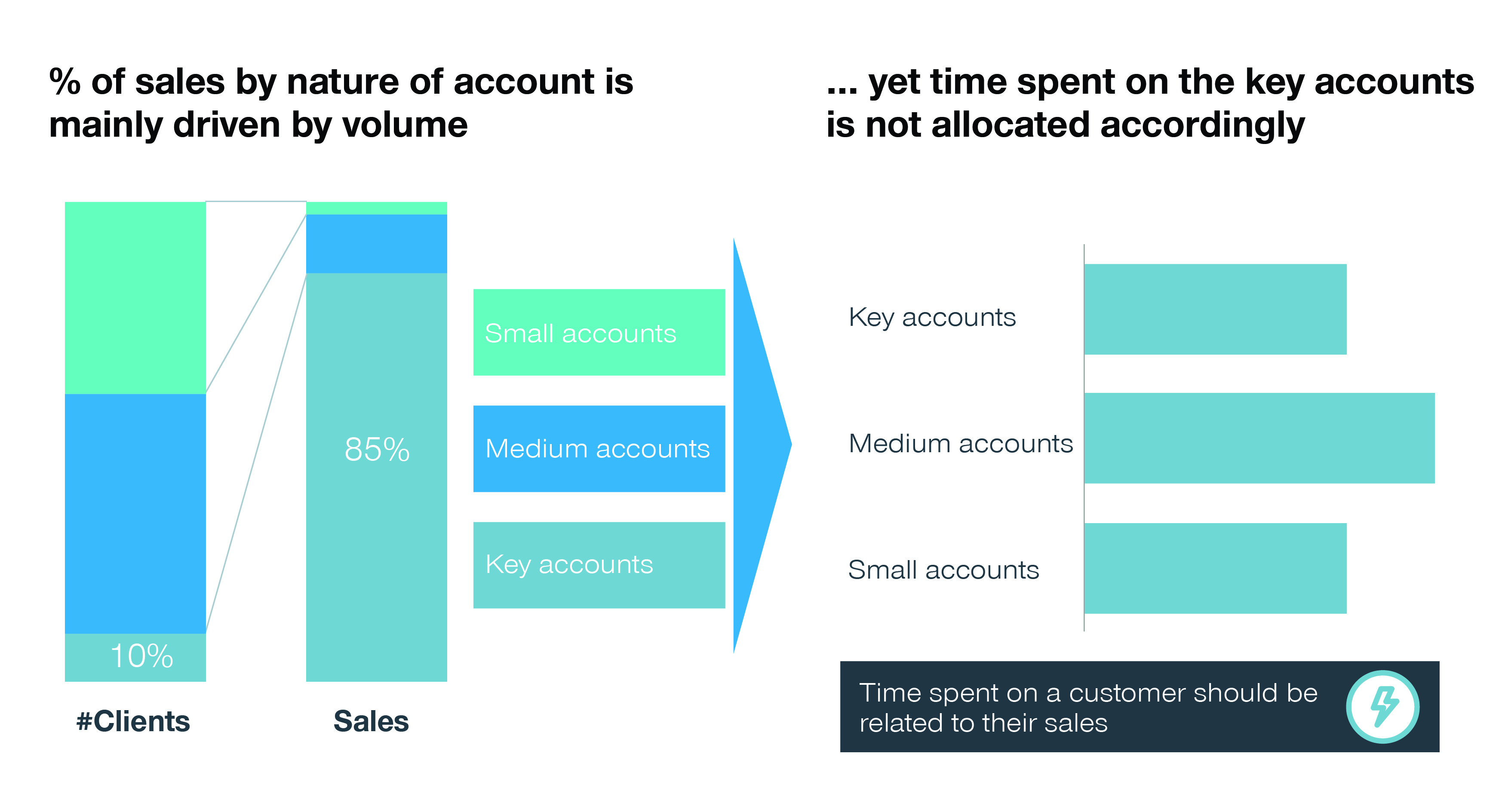After years of unparalleled growth, last year tech companies faced high levels of uncertainty due to challenging macro-economic conditions like unprecedented inflation rates and higher interest rates. As a result, the focus of software companies has moved towards a combination of growth and profitability rather than growth alone.
Cutting costs to boost profitability simply does not cut it: companies must direct efforts towards improving their profitability through revenue. Needless to say, sales and customer success teams are the foundation of this. Optimal sales excellence typically ensures 10-15 ppt more revenue growth whilst 60-80% of sales teams only achieve sub-optimal results due to limited enablement. In the current economic context, it is crucial for B2B SaaS companies to optimize their spending to ensure efficient sales and marketing.
So how can you efficiently ensure optimal performance of sales- and customer success teams? The best-in-class B2B SaaS companies, represented by the top 20% in terms of revenue growth in our Global Software study, are excelling on enabling their sales and customer success teams with the right tools.
In this article we will provide insight on how to optimally equip your sales teams through the best sales playbook items according to the best-in-class. Furthermore, we will discuss which tooling these companies have in place to optimally enable their customer success teams.
Equipping sales with the best sales playbook to optimize conversion
Evidence from our latest software study reveals that sales teams at B2B SaaS companies typically perform significantly better if their sales teams are well-equipped with what Simon-Kucher calls a “sales playbook”. Sales playbooks help sales teams to optimally convey the value of the product, efficiently convert prospects into customers, and prepare them for hard negotiations.
Figure 1: Adoption rate of top 5 elements for sales playbooks

Our software study shows that the best-in-class in terms of revenue growth companies typically have five elements in a sales playbook.
1. Customer segmentation
Needless to say, sales is about understanding your customers’ needs. Therefore, the best-in-class companies typically have an actionable, needs-based customer segmentation that goes beyond a segmentation simply based on demographics. This guides sales in estimating customers’ needs and willingness-to-pay, which in turn can be used for sales to tailor messaging depending on who they speak to. This increases the prospect’s perceived value of the product and increases chance of landing the deal.
2. Customer objections
Best-in-class companies typically gather common customer objections and prepare sample responses to help sales confidently counter any objections that may arise in their day-to-day discussions. Preparing these do not just help converting a prospect, but they can also help when implementing price increases for existing customers.
3. Competitive advantages
Sales teams should know the value of their product versus competitors to compare on value (not just price). That includes knowing where it excels, but also where it has weaknesses. Best-in-class B2B SaaS companies are 17% more likely to have ready-made material on this. Their sales teams know their value and can confidently explain their price positioning. Also, they know how to address weaknesses in such a way that it does not make them lose a deal. Hence, this typically increases conversion and reduces discounting.
4. Clarifying questions
Asking the right questions to prospects helps sales to have more meaningful sales conversations. Best-in-class companies are 46% more likely to have ready-made questions lined up that have proven to lead prospects to the right solutions for the problems they are trying to solve.
5. Learnings and best practices
We typically see sales playbooks work best when they are a “living document”. Providing a space for collecting learnings and best practices from sales (and incentivizing it) allows management to gather valuable input for proposition development, pricing and improvement of sales processes. Best-in-class companies are 35% more likely to actively gather learnings and best practices from previous deals that were won and lost.
Enabling customer success to capture up-sell opportunities and mitigate churn risks
86% of B2B software companies report to have a dedicated customer success team in place. These companies increasingly use customer success for farming opportunities with existing customers. The underlying logic is - when the customer grows, your revenue grows with them.
What separates the best-in-class from the others is that they use tools (which Simon-Kucher calls “customer base management”) that enable the customer success team to perform more optimally. Top performers are 44% more likely to better prioritize their customers with the help of tooling. Furthermore, they are 26% more likely to have tooling in place that estimates the upsell potential of customers. Lastly, best-in-class are 19% more likely to have churn estimation tooling in place. To better monetize your existing customer base, you can apply the following proven customer monetization and retention strategies for SaaS companies.
Figure 2: Customer base management tooling best-in-class companies are more likely to have

1. Tooling for better prioritization
Time is always a scarce resource, also for customer success teams. In practice, most customer success teams unconsciously allocate their time based on either number of requests by a customer or by account type (e.g., Enterprise vs. SMB). Best-in-class companies use tooling to help their customer success team estimate how much time they should spend on a customer. Potential reasons for spending more time on a customer can include revenue, growth potential or churn risk. Using smart tooling allows customer success to prioritize their time on where it is most valuable.
Figure 3: Time spent on different account types

2. Upsell estimation tooling
There are certain points in a customer lifetime where it is natural to start a conversation on upsell. For instance, the number of active users has steadily increased over the past 12 months, and they are actively using many of the key features in your product. Actively monitoring and estimating the upsell potential on a per-customer basis for other solutions in the product portfolio allows you to proactively approach the client with relevant suggestions. Next to improving the customer relationship, monitoring upsell potential also increases the chances that upsell is realized. Based on Simon-Kucher expertise and past project experience, the best SaaS companies can grow their ARR by 30% from their existing customer base alone.
3. Churn estimation tooling
Adoption of tooling to estimate which customers are likely to churn is 42% for non-top performers and just 50% with best-in-class. Yet, we believe it deserves greater importance due to its potential. With churn estimation tooling, customer success can address and mitigate churn before it occurs. Key is to set triggers which inform customer success teams when to launch retention campaigns and win-back initiatives. We typically recommend to identify, prioritize and differentiate retention efforts by quantifying account importance and churn risk. For large strategic accounts with high churn risk customer success should be encouraged to take greater action than for small accounts where actions may not be profitable.
Mastering sales excellence for profitable growth
In conclusion, there has been a shift in the software industry where companies no longer focus on growth at all costs. Profitability has become more important. At the heart of profitability is the performance of sales and customer success teams. In this article, we discussed how best-in-class B2B SaaS companies in terms of revenue growth in Simon-Kucher’s Global Software Study enable their sales teams to outperform their peers. There are typically 5 types of sales materials that are more commonly used by these top performers namely: customer objections, customer segmentation, an overview of learnings and best practices, clarifying questions and predefined cross-sell paths. Furthermore, best-in-class B2B SaaS companies are more successful in growing revenue with current customers by optimally enabling their customer success teams through tooling on prioritization and upsell and churn estimation of customers.
We support our clients on all the above-mentioned topics, from developing sales excellence tools to training your customer success teams. Interested in how we can support you on these topics and set the first step in creating your sales excellence? Feel free to contact us.
The authors wish to thank Roos Offerhaus (Manager) and Pepijn van Eerten (Senior Consultant) for their contribution to this article.








